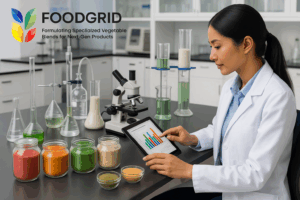In food procurement, the wrong supplier can cost you more than just inflated invoices—it can jeopardize your brand reputation, disrupt operations, and drain resources. If you’re only negotiating on price, you’re gambling with your entire supply chain.
The Procurement Buyer’s Dilemma: Price vs. Value
As a procurement professional—whether you’re a Procurement Manager, Purchasing Manager, Ingredient Buyer, or Strategic Sourcing Manager—your role extends far beyond securing the lowest bid. The challenge lies in balancing cost efficiency with operational continuity, quality assurance, and compliance.
In the food industry, price is only one variable in a far more complex equation. The suppliers you choose directly influence:
- Product quality (impacting customer satisfaction and safety)
- Operational efficiency (preventing costly downtime)
- Regulatory compliance (avoiding fines and recalls)
- Brand reputation (maintaining trust in your market)
Why Price Alone is a Risky Benchmark
1. Hidden Operational Costs
A supplier with rock-bottom pricing might deliver late, substitute products, or ship inconsistent quality—all of which cost you in production delays, rework, or customer dissatisfaction.
Example: A “cost-saving” supplier delivers produce two days late, forcing a last-minute purchase from a local distributor at triple the cost.
2. Quality Degradation Over Time
Some suppliers secure contracts by offering high-quality products at first, then gradually substituting lower-quality alternatives. This can erode your end product’s consistency.
3. Supply Chain Disruptions
Overreliance on low-cost suppliers without assessing their financial health or operational capacity can expose you to supply gaps if they face bankruptcy, strikes, or transportation issues.
According to McKinsey & Company, supply chain disruptions lasting a month or more occur every 3.7 years on average, making supplier resilience a critical selection factor.
Core Evaluation Criteria for Food Suppliers
Below are key non-price criteria procurement professionals should assess when selecting a food supplier for the long term.
1. Quality Assurance and Consistency
- Standards and Certifications – Look for suppliers with recognized food safety certifications (e.g., SQF, BRCGS, ISO 22000, HACCP).
- Batch Testing & Traceability – Verify if the supplier conducts regular quality checks and maintains complete traceability from origin to delivery.
- Defect Rate Tracking – Request historical data on rejected shipments, spoilage, or contamination incidents.
Food and Agriculture Organization (FAO) emphasizes that robust quality systems reduce waste, improve safety, and enhance consumer trust.
2. Supply Chain Reliability
- Lead Times – Measure on-time delivery rates over a sustained period.
- Backup Plans – Ask about contingency plans for extreme weather, labor shortages, or transport delays.
- Inventory Management – Suppliers should maintain safety stock levels without passing on excessive storage costs.
3. Financial Stability
- Credit Checks – Use reputable financial reporting tools to assess solvency.
- Business Longevity – Companies with decades of operation often have proven resilience.
- Market Presence – Strong client portfolios suggest reliability and demand.
4. Regulatory Compliance
- Food Safety Laws – Compliance with FDA, USDA, and local state requirements is non-negotiable.
- Labeling & Allergen Accuracy – Suppliers must meet evolving labeling standards to protect your brand from lawsuits.
- Inspection Records – Review public inspection reports where available.
5. Innovation and Adaptability
- New Product Development – Can the supplier adapt to emerging dietary trends or ingredient requirements?
- Sustainability Initiatives – Practices like waste reduction, energy efficiency, and ethical sourcing are increasingly tied to brand perception.
- Technology Integration – Look for suppliers leveraging inventory tracking, automated ordering, and real-time communication tools.
6. Cultural and Strategic Fit
- Shared Values – Alignment in sustainability, transparency, and service mindset can strengthen long-term partnerships.
- Service Responsiveness – A dedicated account manager and proactive communication can be as valuable as product quality.
Building a Reliable Supplier Scorecard
A supplier scorecard standardizes evaluations and creates transparency for internal stakeholders.
Suggested Supplier Scorecard Metrics:
| Category | Weight (%) | Key Metrics |
| Quality & Safety | 30 | Defect rate, certifications, traceability |
| Delivery Performance | 25 | On-time rate, lead time accuracy |
| Compliance | 15 | Regulatory adherence, inspection results |
| Financial Stability | 10 | Credit score, longevity |
| Innovation & Support | 10 | New products, adaptability |
| Cultural Fit | 10 | Communication, shared values |
Conducting a Thorough Supplier Audit
- Document Review – Certificates, audit reports, and financial records.
- On-Site Visits – Observe hygiene, storage, and processing firsthand.
- Performance History – Request 12–24 months of service data.
- Reference Checks – Speak with other customers about their experience.
Harvard Business Review notes that high-performing procurement teams integrate qualitative insights with quantitative metrics for balanced supplier decisions.
Long-Term Relationship Management
Once selected, suppliers require ongoing evaluation and engagement.
- Quarterly Business Reviews (QBRs) – Align expectations, review KPIs, and discuss upcoming changes.
- Performance Incentives – Reward suppliers who exceed quality or delivery standards.
- Early Issue Escalation – Address problems proactively before they escalate into crises.
Case Study: Value Over Price
A mid-sized bakery chain faced rising flour costs. A cheaper supplier offered a 12% discount, but the existing supplier had a 98% on-time delivery rate, HACCP certification, and a proven record during a prior supply chain crisis.
When a transport strike hit, the lower-cost supplier failed to deliver for two weeks—costing the bakery thousands in lost sales. The reliable supplier rerouted shipments and kept all stores operational. The lesson: value beats price every time.
Leveraging Technology in Supplier Evaluation
Modern procurement teams use digital platforms for supplier management, performance monitoring, and compliance tracking.
Internal resource suggestion: Explore FoodGrid’s Supplier Management Solutions for tools that enhance sourcing decisions with real-time data and performance tracking.
Red Flags to Watch For
- Frequent last-minute substitutions without approval.
- Vague responses to audit or compliance questions.
- Declining product quality over time.
- Poor communication during disruptions.
Balancing a Supplier Portfolio
Just like financial investments, a supplier base should be diversified. Maintain primary suppliers for core needs and secondary suppliers for backup. This reduces dependency risk without overcomplicating procurement.
References
- McKinsey & Company – Risk, resilience, and rebalancing in global value chains (link)
- Food and Agriculture Organization of the United Nations (FAO) – Quality and safety of food (link)
- Harvard Business Review – A Better Way to Manage Supplier Risk (link)
- U.S. Food & Drug Administration – Food Safety Modernization Act (FSMA) (link)
Internal Links for Deeper Insights
Conclusion: Long-Term Value is Measured in Reliability
For procurement professionals, the lowest price today can become the highest cost tomorrow if the supplier cannot deliver consistently, meet quality standards, or navigate disruptions.
Evaluating quality, reliability, compliance, financial stability, and cultural fit creates supplier partnerships that support growth, protect brand reputation, and ensure operational resilience.
Ready to strengthen your supplier evaluation process? Contact FoodGrid today to learn how our tools and expertise can help you identify, assess, and partner with food suppliers who deliver long-term value—beyond the price tag.


